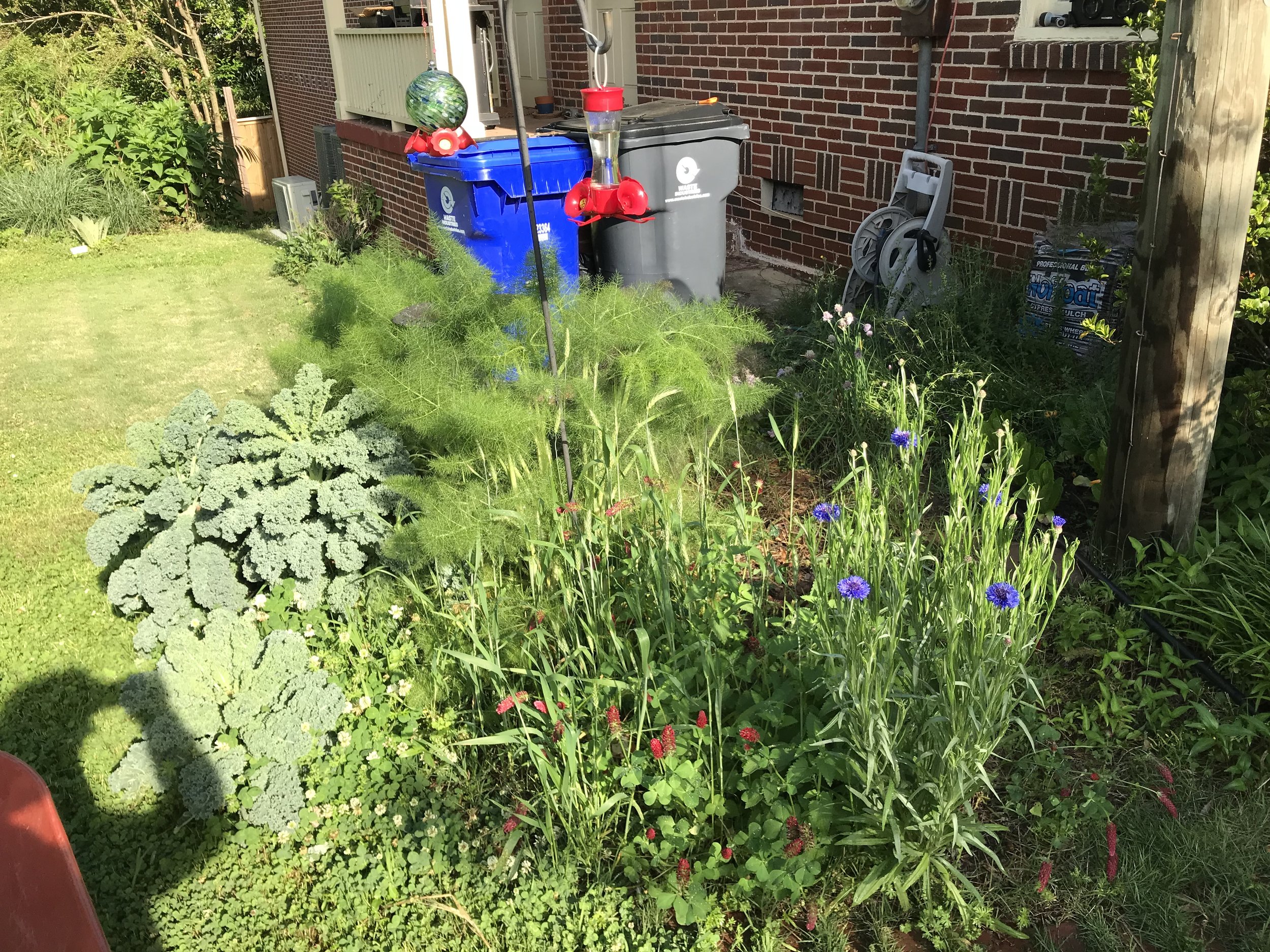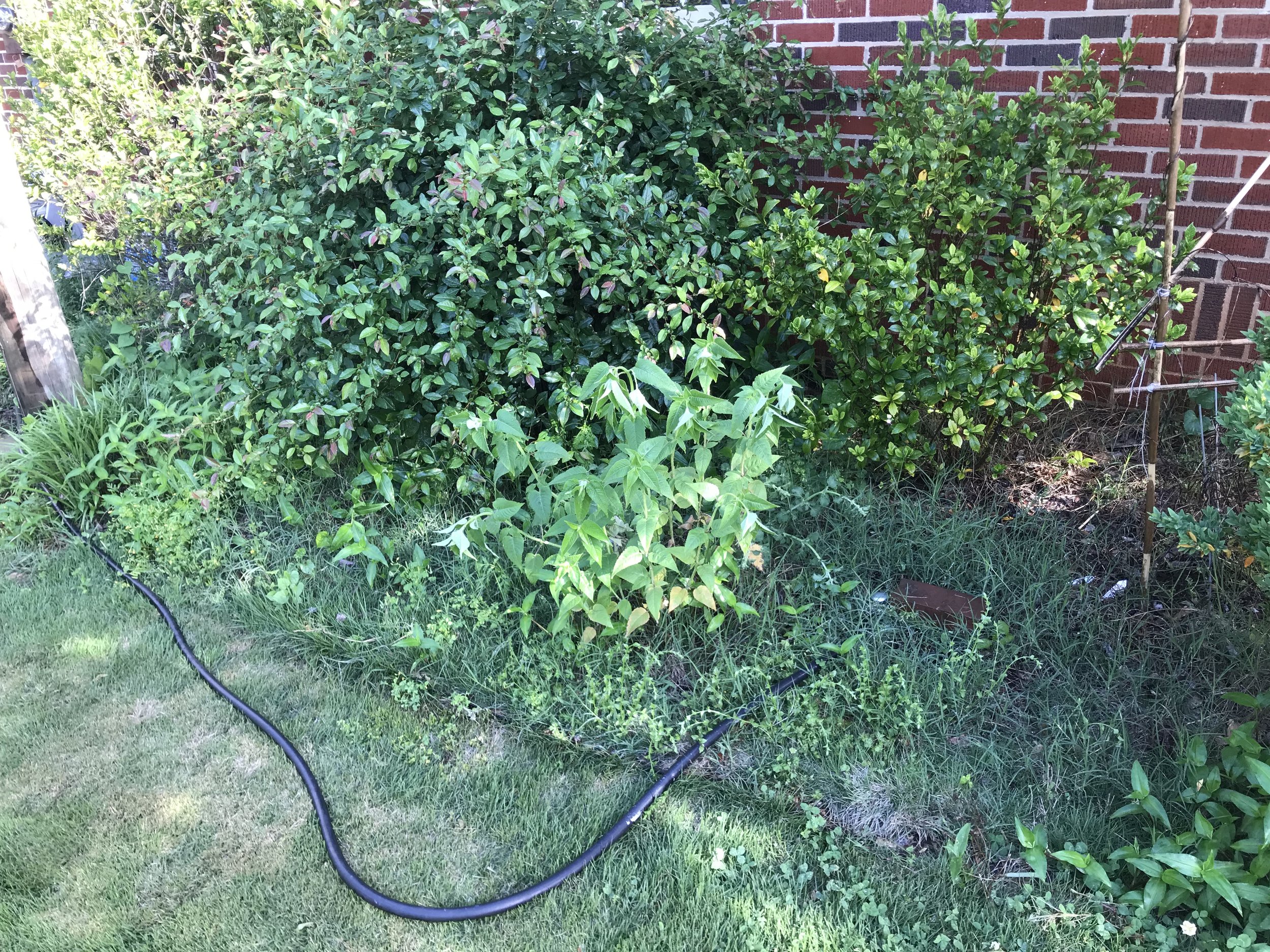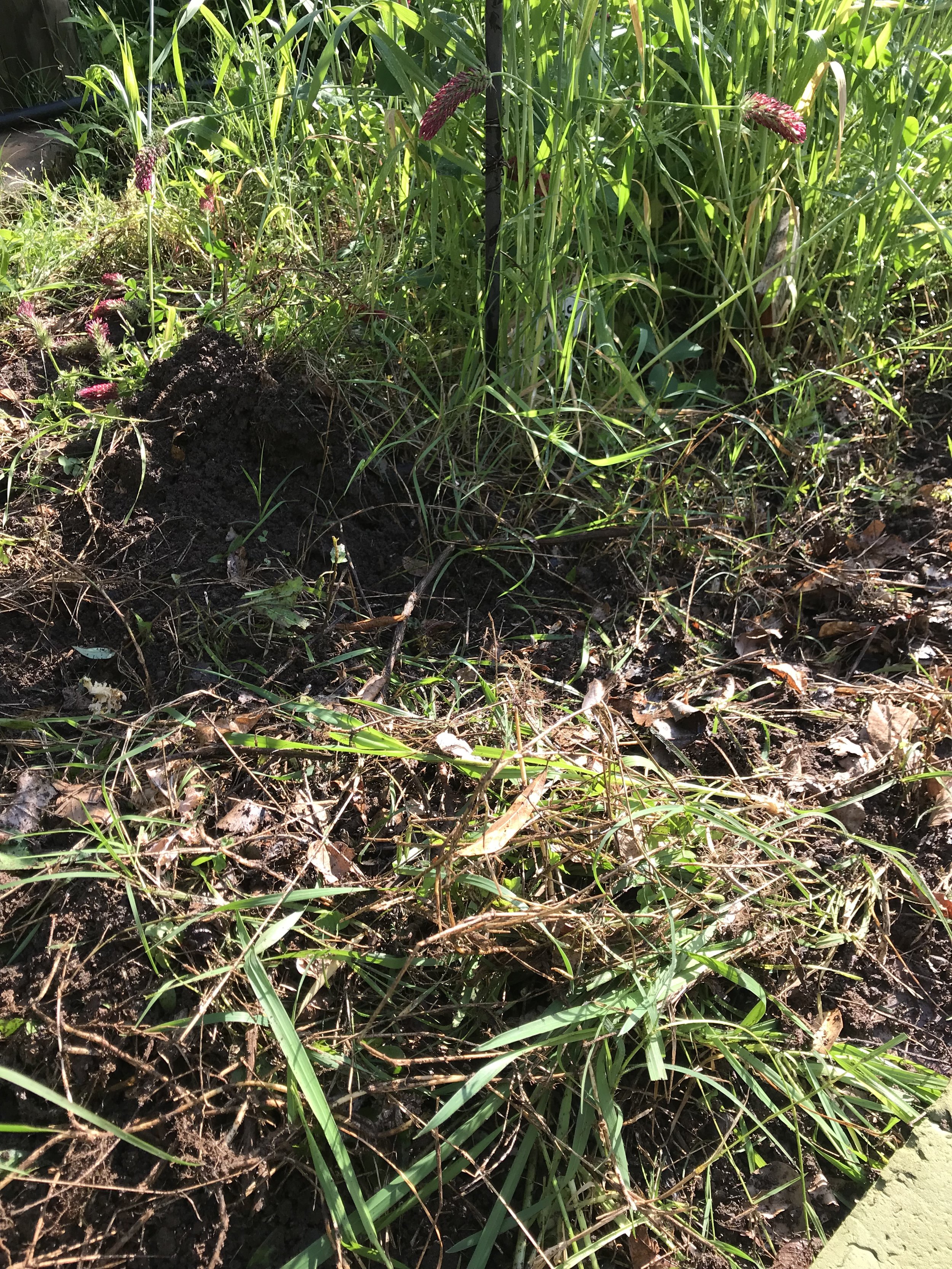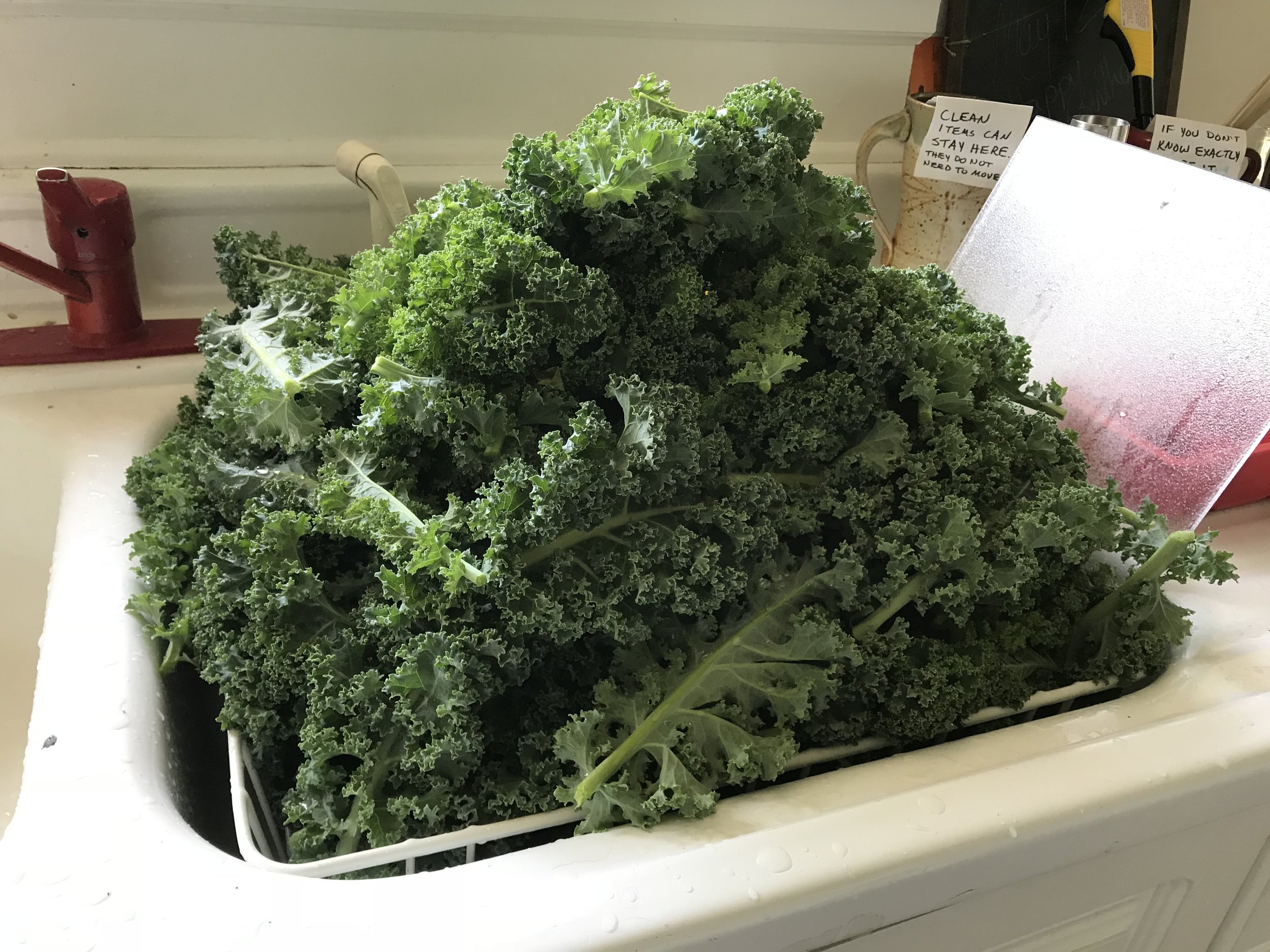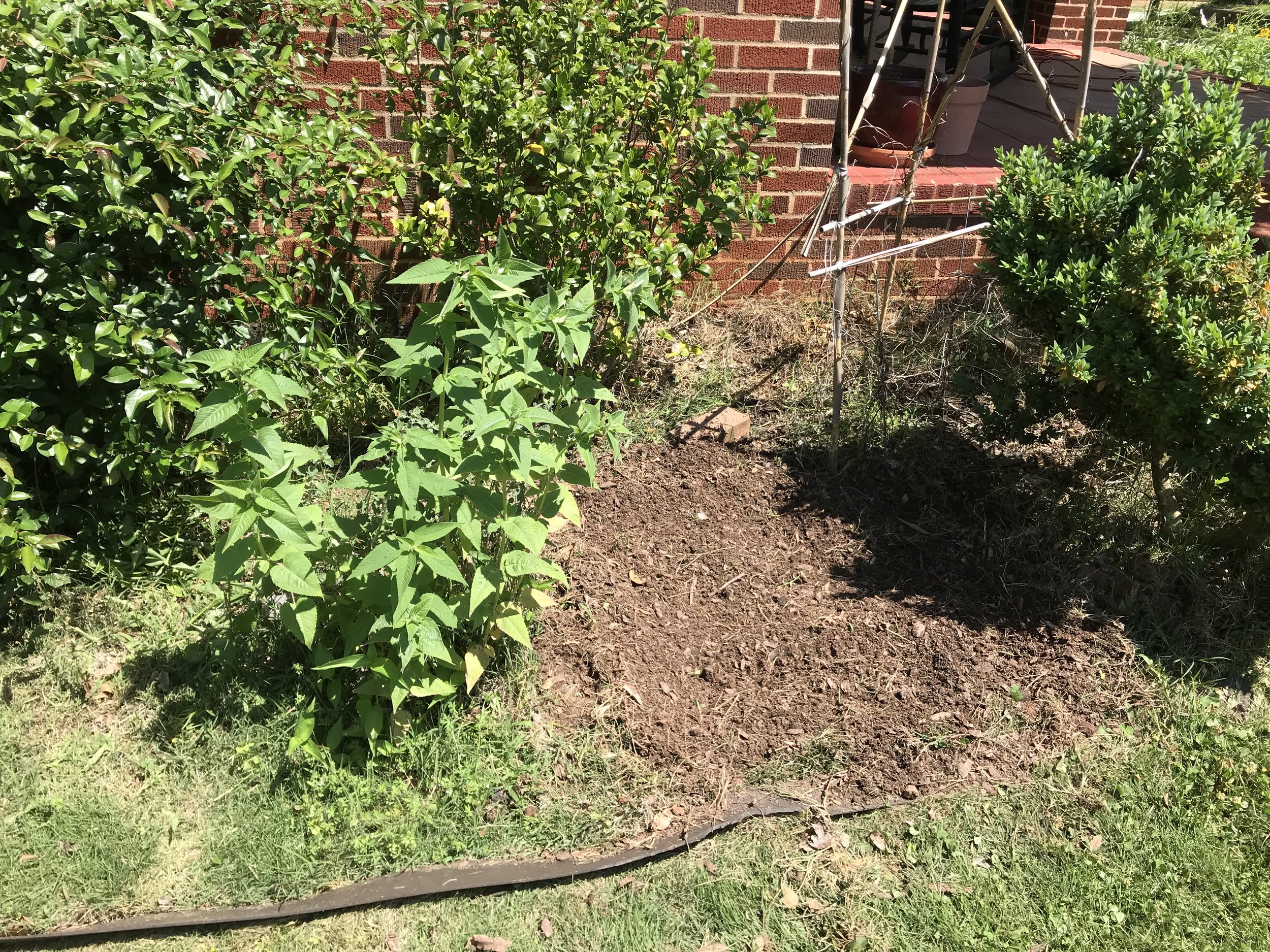The herb garden
/The poet Wallace Stevens used the image of a garden as a metaphor for the creative process in a couple of ways. First, he posited that the universe was like a wild forest or jungle, and that we as human beings organize as much of that chaos as we can cope with into a garden — something tamed, orderly, walled. A creative person was one who looked for ways out of that garden — through a gate or a portal or just plain through the hedges — back into the chaos, and who then organized a little more of that chaos to add to the garden.
Secondly, he knew what all gardeners knew: every now and then you have to scrape a garden clean and start over.
Today we look at my herb garden.
It's almost completely overgrown: three oversize dill plants, kale still growing from last season, some wildflowers still making their presence known from an old butterfly garden seeding, and of course endless crabgrass and oxalis. (In the rear, there are still viable plants: parsley, oregano, thyme, chives, lovage, fennel, some recently planted romaine lettuce.)
There's also this area, which I claimed last year for some fairly obscure/medieval herbs, like valerian, horehound, and bee balm:
And so we begin: ripping out two of the dill plants, harvesting the kale, and pulling out as much of the crabgrass and oxalis as I can:
Not to get too metaphorical, but I think the lesson for an artist in gardening like this is that you simply can't go in and whack out the crabgrass. It has evolved to defeat you: it breaks easily, leaving very deep roots in a random network. You have to dig deep, and you have to cover the same ground over and over. There will always be strands you didn't notice the first three passes; there will always be more roots if you dig again. And you will never get rid of all the crabgrass.
Likewise, if you've got your ABORTIVE ATTEMPT down, the GESTALT/SUCCESSIVE APPROXIMATION may take you a while as you keep coming back to your work and keep seeing small changes you can make. And you will never fix all the imperfections.
That's it. That's the arts lesson for the day. The rest of this is just bragging that I got to work in my herb garden.
The kale harvest:
Actually, that was about half the kale harvest. I shared most of it with Backstreet Arts and made kale chips with the rest.
The herb garden as prepared as I felt like making it:
And the subsidiary area:
I did all of this a week and a half ago because UPS assured me via email that my plants (from The Growers Exchange) were to be delivered early last week. Then I got an email that said, oopsie, not until later, our bad. That gave me time to review the crabgrass situation and to extract more of the pest.
Finally the plants arrived:
Pro tip: place all your plants before you dig the holes. This is really important for tall plants, so that they don't block shorter plants.
Finally, planted:
In the foreground, basil. In the back, more lovage. I ordered it before I knew that the plant from last year was going to make a comeback. Still, one can never have too much lovage when one is experimenting with making one's own gin. Lower right, sweetgrass, which I planted last year but which was rapidly overwhelmed by wildflowers and whatever sprouted from birdseed from the feeder someone else in the household decided would be a good idea.
Foreground, borage; background, angelica, again for the gin flavoring. (For those who obsessively noted the plants up above, there were also three cat grass plants in pots and a Joe Pye weed for yet another area in the yard.)
And there we have it. The wild universe is tamed once more and I have a garden.


